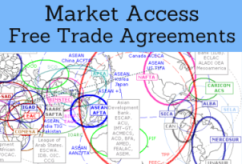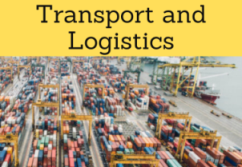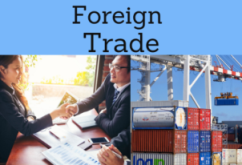ASEAN Free Trade Area, Import Duties, Singapore
Tariff liberalization, ASEAN Markets. Customs. Cambodia, Laos, Myanmar, Vietnam

The objective of ASEAN Free Trade Area (AFTA) is to reach free trade in Products in ASEAN Region to create a single market and production base for a deeper economic integration of ASEAN economies towards ASEAN Economic Community.
- Introduction to ASEAN Free Trade Area (AFTA)
- Free Trade Agreement of ASEAN Free Trade Area (AFTA)
- Tariff Liberalization
- Import Duties and Tariff Rate Quotas Elimination
- ASEAN Rules of origin
- Calculation of Regional Value Content
- Non-tariff Measures
- Import Licensing Procedures
- Trade Facilitation
- Standards, technical regulations and conformity assessment procedures
- Sanitary and Phytosanitary Measures
- ASEAN Single Window
- ASEAN Customs
- Customs Valuation
- Emergency situation

The Subject “ASEAN Free Trade Area” is included within the curriculum of the following academic programs at EENI Global Business School:
Masters: International Business, Foreign Trade.


Masters adapted to ASEAN Students:  Brunei,
Brunei,
 Cambodia,
Cambodia,
 Indonesia,
Indonesia,
 Laos,
Laos,
 Malaysia,
Malaysia,
 Myanmar,
Myanmar,
 Philippines,
Philippines,
 Singapore,
Singapore,
 Thailand, and
Thailand, and  Vietnam.
Vietnam.
Languages:  or
or  ASEAN
ASEAN  Zone de libre-échange de l’ASEAN
Zone de libre-échange de l’ASEAN  ASEAN.
ASEAN.
The Agreement on Common Effective Preferential Tariff Scheme for ASEAN Free Trade Area needs that tariff rates levied on a huge range of Foreign Trade of products within ASEAN Region be reduced to 5%.
Most of ASEAN region is a Free Trade Area. Accounting for 96% of all International Trade of the Association of Southeast Asian Nations, the first six signatories of the Common Effective Preferential Tariff Scheme for ASEAN Free Trade Area (AFTA) have reduced their custom Tariffs on intra-regional trade to 5% for all export products to the “Inclusion list” or removed them in total.

Sample - ASEAN Free Trade Area (AFTA)

- ASEAN-6: Brunei, Indonesia, Malaysia, the Philippines, Singapore, and Thailand
- CLMV: Cambodia, Laos, Myanmar, and Vietnam
For ASEAN-6, by 1 January 2009 (Brunei, Indonesia, Malaysia, the Philippines, Singapore, and Thailand).
- Import duties of at least 80% tariff lines are eliminated
- Import duties on all ICT products, as defined in the e-ASEAN Framework Agreement, are removed
- Import duties on all Priority Integration Sectors products are at 0%
- Import duties on all goods are equal to or less than 5%
For Laos, Myanmar, and Vietnam, import duties on all the products are equal to or less than 5% by 2009.
For Cambodia, import duties of at least 80% of tariff lines are equal to or less than 5% by 2009.
- ASEAN Economic Community
- FDI in ASEAN Countries
- ASEAN Trade Agreements: ASEAN Free Trade Area (AFTA), Indonesia-Malaysia-Thailand Growth Triangle, Mekong Economic Cooperation Strategy, East ASEAN Growth Area, China, Canada, Australia-New Zealand, India, the EU, South Korea, Russia, the United States, Pakistan, Japan...

(c) EENI Global Business School (1995-2025)
Top of this page









 WhatsApp
WhatsApp